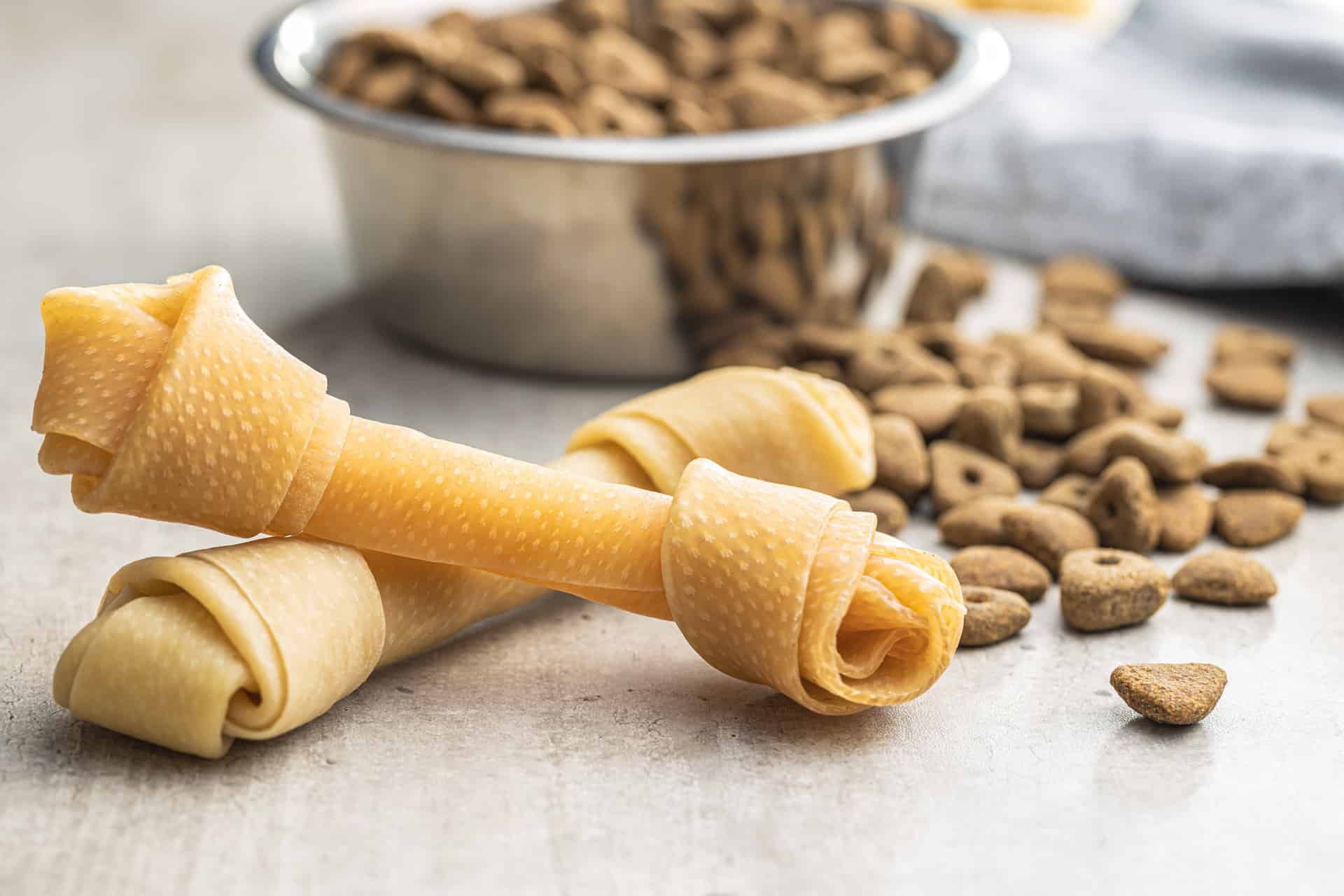Evaluating Dog Food Ingredients: A Guide for Dog Owners
Evaluating dog food ingredients is very important. As a dog owner, it’s your job to read the list of ingredients on the packaging. Look for high-quality protein sources such as beef, chicken, or fish. Avoid meat by-products and fillers in dog food. Whole grains and vegetables should be included for essential vitamins and minerals. Match the food to the dog’s age and breed-specific needs. Check for allergens and sensitivities and avoid them. With these tips, you can provide your furry friend with a healthy diet. Evaluating dog food ingredients: like a pro!
Understanding Dog Food Ingredients
As a dog owner, evaluate the ingredients in your pet’s food! This guide will help. Common ingredients in dog food can benefit your furry friend. Let’s look at what these are and how they help.
Nutrition Grade
Evaluating dog food ingredients? Nutrition grade is here to help! It’s a rating system that measures the quality of the ingredients. It looks at nutrients, safety, and amount used. High-grade ingredients have essential nutrients, like protein and vitamins. Low-grade ingredients are things like fillers and by-products. Get the best nutrition for your pup by looking for foods with a high nutrition grade. Remember, always talk to your vet first before changing your dog’s diet.
Ingredient List
Choosing healthy, nutritional dog food? It’s important to know what’s in the packaging. To help, here’s a guide:
- The first ingredient should be quality protein – like chicken, beef, or fish.
- Look for whole food sources like potatoes, peas, and carrots. Avoid fillers like corn and wheat.
- No artificial preservatives and flavors. Go for natural preservatives, like tocopherols.
- Be careful of by-products or unnamed meat sources. These could contain low-quality or diseased meat.
- If your dog has special dietary needs, ask your vet what to look out for or avoid.
Ingredient Quality
As a dog owner, it’s key to know the quality of dog food ingredients. Here’s a guide to help you:
- Look for named meat sources like chicken or beef.
- Avoid artificial preservatives and sweeteners, such as BHA, BHT, and ethoxyquin.
- Check for whole grains, like brown rice, and vegetables like carrots and sweet potatoes.
- Avoid fillers like corn, wheat, and soy.
- Also, stay away from meat by-products, as they are low-grade proteins.
Understanding the quality of ingredients can help you pick the right food for your pup. This can lead to better health outcomes!
Identifying Key Ingredients in Dog Food
Are you a pet owner? It’s essential to know what’s in your pup’s food! Being aware of the nutrition in your dog’s meal is essential for proper care. To make sure your pup gets the proper nutrition, familiarize yourself with the key ingredients in dog food. This guide can provide the info you need to evaluate the ingredients in your pet’s food.
Protein Sources
If you’re a pup parent, it’s so important to understand what’s in your doggo’s food. Here are the best protein sources for your pooch:
- Chicken or Turkey – Lean cuts are great for aminos and omega-6 fatty acids for a healthy fur coat.
- Beef – This is a great protein source, but be mindful of fat content.
- Fish – Loads of prot, omega-3 fatty acids, and other essential nutrients.
- Lamb or Venison – Lean proteins are ideal for dogs with food allergies or sensitivities.
- Eggs – Budget-friendly and great for dogs who have trouble digesting meat.
When choosing dog food, prioritize animal-based proteins, avoid by-products, and check for fillers and artificial preservatives.
Meat
Meat is a key part of most dog food. It’s a great source of protein and other important nutrients. But not all meat is the same. Here’s how to pick out the best:
- Look for named animal proteins like chicken, beef, or lamb as the first ingredient.
- Avoid generic animal sources like “meat meal” or “animal by-products”.
- Choose meat that is human-grade or USDA-inspected.
- Check for organ meats like liver or heart, which are full of essential vitamins and minerals.
By picking quality meat sources, you can help your dog stay healthy and happy.
Plant-Based Protein
Plant-based proteins are vital in dog food. They offer many health benefits, like better digestion, weight management and coat health. When selecting dog food ingredients, you must identify plant-based protein sources. Here are some common ones:
- Lentils: High in fiber and easy to digest. Plus, they have iron and minerals.
- Peas: Protein, fiber and antioxidants. Great for boosting your dog’s health.
- Chickpeas: Protein and minerals like magnesium and potassium.
- Soy: A complete protein with all 9 essential amino acids. But, it’s an allergen for some dogs, so watch for any reactions.
When choosing dog food, look for quality ingredients and easy labels. And, talk to your vet to decide the best plant-based proteins for your pup.
Carbohydrates
Carbohydrates are a must-have nutrient for your pup’s diet. When looking at dog food ingredients, it’s important to look for quality sources of carbs that will keep your pup healthy and active.
For example:
- Brown rice – an excellent source of carbs; plus minerals and vitamins.
- Sweet potatoes – nutrient-dense, with fiber, Vitamins C and B6, and potassium.
- Oatmeal – high-quality carbs; good for sensitive tummies and skin allergies.
- Barley – full of nutrients; antioxidants, fiber, Vitamins B1 and B3.
Don’t rely on carbs as the main source of nutrition. A balanced diet should include carbs, proteins, and fats for optimal health.
Whole Grains
Whole grains are a must-have in dog food. They provide essential nutrients like fiber, vitamins, and minerals. Not all grains are equal though – you must pick the healthiest ones. Examples:
- Brown rice – Fiber, minerals, and vitamins. Plus, easy to digest, perfect for dogs with sensitive stomachs.
- Oats – Reduces cholesterol, high in protein and fiber. Also, gives your pup long-lasting energy.
- Quinoa – A complete protein, with all 9 essential amino acids. Plus, fiber, vitamins, and minerals.
- Barley – Good source of dietary fiber and antioxidants. Low glycemic index, good for preventing weight gain or diabetes.
When selecting dog food, check the ingredients list. Choose products with healthy whole grains as the main ingredient.
Vegetables
Veggies are super important for your pup’s food. They provide many nutrients that are great for health and wellbeing. Here are some key veggies and their benefits:
- Carrots: Vitamin A, fiber, antioxidants. Improves digestion, boosts immunity, and shiny coat/healthy eyes.
- Sweet Potatoes: Fiber, Vitamin C, Vitamin B6. Good for digestion, maintains healthy blood pressure.
- Peas: Protein, fiber, Vitamins A & K. Aids in digestion, heart health, and immunity.
- Spinach: Iron, Vitamin K, antioxidants. Healthy skin, strong bones/teeth, boosts immunity.
- Broccoli: Vitamins C, K, A. Great for immunity and eyes. Plus, promotes healthy bones/teeth.
Add these veggies to your pup’s meals for proper growth and development.
Fats
Fats are important in your pup’s diet. They give them energy, help absorb nutrients, and keep skin and fur healthy. Not all fats are the same, though, so it’s important to know which ones are best. Here’s what to look for:
- Omega-3 fatty acids, found in fish oil, flaxseed, and chia seeds, help reduce inflammation and boost brain function.
- Omega-6 fatty acids, like vegetable oils, chicken fat, and pork fat, give energy, support immunity, and help maintain a healthy weight.
- Monounsaturated and polyunsaturated fats, from salmon, avocados, and nuts, can help lower cholesterol and reduce heart disease risk. But, they should be given in moderation as too much fat can lead to obesity.
Choose whole foods with quality fats to make sure your pup gets the right nutrition.
Animal fats
Animal fats are must-haves in dog food! They offer so many great benefits for your pup’s well-being.
First, they’re a great, digestible source of energy. Plus, they’ve got fatty acids like Omega-3 and Omega-6 that help with brain function and growth.
Plus, they make the food taste better – and dogs love it!
But, make sure you get high-quality fats from reliable animal sources, like chicken fat or beef fat. Low-quality fats from unknown sources may have additives, preservatives, and toxins, which could harm your pup.
Plant-Based Fats
Plant-based fats are essential in dog food. Owners must evaluate the nutrition for their pets carefully. Here are some key plant-based fats to look for:
- Flaxseed Oil – High in omega-3 fatty acids. Good for skin, coat & joint health.
- Canola Oil – Low in saturated fat & high in monounsaturated fats. Provides energy & good skin/coat.
- Coconut Oil – Rich source of medium chain triglycerides. Helps maintain skin/coat, digestive health & cognition.
- Sunflower Oil – Good source of linoleic acid, an essential omega-6 fatty acid. Necessary for healthy skin/coat.
- Soybean Oil – Plant-based source of fatty acids. Promotes healthy skin/coat.
Remember, plant-based fats alone don’t meet a dog’s fat requirements. Check other sources of fat in the food for nutritional needs.
Ingredients to Avoid in Dog Food
Dog owners can find it challenging to figure out doggie food ingredients. It’s important to know which ingredients to avoid, in order to make sure your pup is getting the nutrition they need. There are some ingredients that you should stay away from in doggy food.
In this article, we’ll explain what these ingredients are, why you should keep away, and how to spot them on labels.
Artificial Preservatives
Artificial preservatives are something dog owners should steer clear of when buying commercial dog food. They are added to lengthen the shelf life, yet they can be bad for your pup’s health. BHA is a potential human carcinogen, while BHT can cause liver and kidney damage. Ethoxyquin is even banned from people food in many countries. It is linked to cancer, liver damage, and allergies in dogs.
For your pup’s safety and the quality of their food, opt for natural preservatives like mixed tocopherols or ascorbic acid. Also, select dog food that specifies what meat sources are used, instead of vague terms like “animal meal” and “meat by-products.” Lastly, look for dog food with whole fruits, veggies, and grains for added nutrients.
Artificial Flavoring
Stay away from artificial flavoring when choosing dog food. It contains chemicals and additives that, if consumed long-term, can be bad for your pup’s health. Here are some common ingredients to avoid:
- Propylene Glycol – Can cause anemia in dogs.
- BHA and BHT – Connected to cancer in dogs.
- Corn Syrup, Sucrose, and Fructose – Can lead to tooth decay, obesity, and diabetes.
- Artificial colors – Can cause allergies and hyperactivity.
Remember to read the label and pick dog food with natural, whole ingredients. For extra assurance, look for “human-grade” or “organic” products.
Artificial coloring
Artificial coloring is an ingredient to stay away from in dog food. It is of no nutritional benefit, and can even be damaging for dogs. Red 40, Yellow 5 & 6, Blue 2, and Caramel Color are some of the common artificial coloring ingredients found in dog food.
- Red 40 can cause allergic reactions and has been associated with tumors.
- Yellow 5 & 6 can cause hypersensitivity reactions, behavioral issues, and cancer.
- Blue 2 has been connected to brain tumors in lab animals and is banned in human food in certain countries.
- Caramel Color is thought to be safe for dogs but is added to low-quality dog food to make it look attractive.
As a pet owner, it’s important to check dog food labels to avoid artificial coloring and keep your pet healthy and happy.
Reading Dog Food Labels: Understanding the Guaranteed Analysis
Pet owners, pay attention! Learn what to look for on your pup’s food labels. The guaranteed analysis section of dog food labels provides insight into the food’s content. It’ll show you the percentages of crude protein, fat, and fiber.
Let’s get into the details of reading dog food labels and understanding the guaranteed analysis.
Crude Protein
Crude protein is a term used on dog food labels to describe the lowest amount of protein in the food during processing. It’s important to understand the guaranteed analysis of labels to make sure your pet is getting the right nutrients. Here’s a guide to help you out:
- Crude protein: Expressed as %, this is the amount of protein in the food.
- Crude fat: Also expressed as %, this is the amount of fat in the food.
- Crude fiber: % is used here too, and it’s the amount of fiber in the food.
- Moisture: % again, this is the amount of water in the food.
By looking at the guaranteed analysis, you can see the quality of ingredients and make a better decision when buying pet food.
Crude Fat
Crude fat is an important part of dog food. Knowing what it means helps owners decide the quality and nutrition of their pet’s diet.
Crude fat is the total fat in a food including both saturated and unsaturated. Fat gives energy and supports a healthy coat and skin.
When reading dog food labels, look for a crude fat percentage of 5-8% for adult dogs and 8-10% for puppies. Quality matters though, so check the food has high-grade sources of fat, like fish oil or chicken fat.
Also, some dogs need different levels of fat depending on breed, age, and activity. Speak to your vet to know the right amount of fat for your pup.
Crude Fiber
Look out for crude fiber when reading dog food labels! It’s indigestible and provides bulk to the dog’s feces. Too much though, can lead to gastrointestinal issues. A moderate amount is best and should come from good sources like vegetables, fruits or grains. Account for the source and content when buying dog food to ensure the best health for your pup!
Moisture
Moisture content is crucial when reading dog food labels and evaluating ingredients. It’s expressed as a percentage which shows how much water is in the food.
High moisture content in canned food can make it tastier and more hydrating. But, it could have less calories.
Dry dog food usually has lower moisture content, but that usually means it has more calories.
Dry matter basis (DMB) is a technique to compare nutrient content between canned and dry food.
As a dog owner, pick a food with the right moisture content for your pup’s needs. Ask your vet for help with selecting the right food.
Choosing a High-Quality Dog Food Brand
Picking pet food? Look at the ingredients! These can hugely affect your dog’s health. This guide looks at the key points of evaluating ingredients, plus the top brands. Get informed and pick the best!
Researching the Brand
Before selecting a top-notch dog food brand, researching is imperative for the health and satisfaction of your pup. When examining ingredients, these factors should be taken into consideration:
- Protein sources: Look for whole meats like beef, chicken, or fish as the main item. Avoid by-products, meat meal, or unidentified proteins.
- Carbohydrates and grains: Whole grains like brown rice, barley, and oatmeal can give essential nutrients and fiber. But, steer clear of food with too many processed grains or extra fillers.
- Fruits and vegetables: These ingredients are a great source of vitamins, minerals, and antioxidants for your dog. Choose dog food brands that include multiple fruits and vegetables.
- Preservatives: Refrain from dog food brands with fake preservatives, like BHA, BHT, and ethoxyquin. Preferably, opt for brands that have natural preservatives, like tocopherols and vitamin C.
By researching and assessing the ingredients in dog food, you can make sure to get the best for your pup. Pro tip: Talk to your vet before changing your pup’s diet, as certain dogs can have unique nutritional or health needs.
Consulting with a Veterinarian
Consulting with a vet is essential when picking a top-notch dog food brand and examining the ingredients of the food you are giving your four-legged friend.
A vet can give helpful info on your pup’s specific nutritional needs, taking into account their breed, age, and any medical problems. They can also suggest dog food brands that meet the highest nutritional standards and provide advice on how to read and understand dog food labels.
Here are some advantages of consulting with a vet:
- Making sure your pup is getting the right nutrition for their individual needs.
- Spotting and dealing with any potential health issues related to diet.
- Getting skilled advice on selecting a dog food brand that is top-notch and meets your pup’s particular nutritional requirements.
- Shielding your pup’s overall health and wellbeing.
Pro Tip: Keep in mind, a balanced diet is just one part of a cheerful, healthy dog. Make certain to give plenty of exercise, mental stimulation, and regular vet check-ups to keep your pooch in top shape.
Selecting the Right Dog Food for Your Dog’s Specific Needs.
Choosing the correct food for your four-legged buddy is paramount to their well-being. You must pick a top-notch dog food brand and evaluate the ingredients in the food to satisfy your dog’s needs.
Here are several pointers for picking the right food:
- Check if it meets the Association of American Feed Control Officials (AAFCO) standards.
- Choose a brand that has high-quality animal protein as the main ingredient.
- Ensure the food is appropriate for your dog’s breed, size, age, and activity level.
- Check the ingredient list to avoid artificial preservatives, colors, and flavors.
- Consult your vet to discuss any extra nutritional needs your dog may have.
These tips will help you make sure you choose the right food to support your pup’s needs and keep them healthy and cheerful!
Frequently Asked Questions
Q: How do I know what ingredients to look for in my dog’s food?
A: Look for high-quality protein sources such as chicken, beef, or fish, as well as whole grains, fruits, and vegetables. Avoid fillers and by-products.
Q: Are grain-free diets better for my dog?
A: Not necessarily. While some dogs do well on grain-free diets, others may experience health problems due to a lack of essential nutrients. Consult with your veterinarian to determine what diet is best for your individual dog.
Q: What are by-products in dog food?
A: By-products are animal parts that are not used for human consumption, such as organs, bones, and blood. While they can be a good source of protein, it is important to ensure they are high-quality and not from controversial sources.
Q: Is it important to look at the order of ingredients on the dog food label?
A: Yes, ingredients are listed in order of weight, so the first few ingredients are the most important. Look for high-quality protein sources as the first ingredient.
Q: What should I be wary of when evaluating dog food ingredients?
A: Be wary of artificial ingredients, added sugars, and unidentified sources of protein. Look for natural preservatives and whole food ingredients.
Q: How can I determine the nutritional value of a dog food?
A: Look for the “AAFCO statement” on the label, which indicates whether the food meets nutrition standards established by the Association of American Feed Control Officials.







